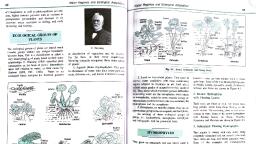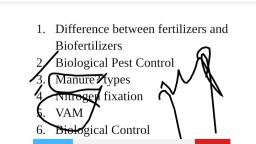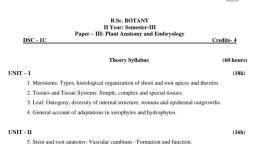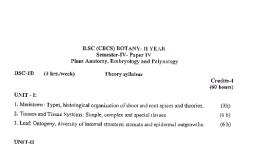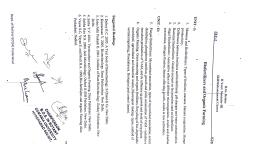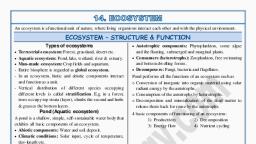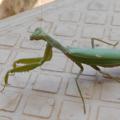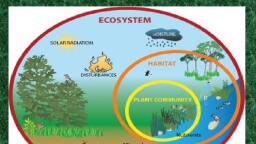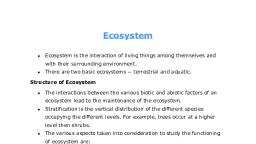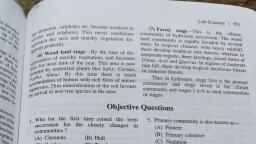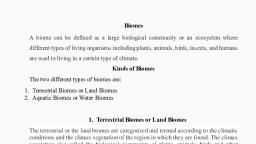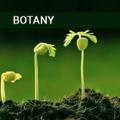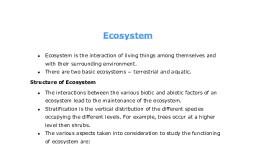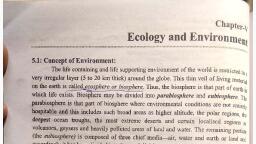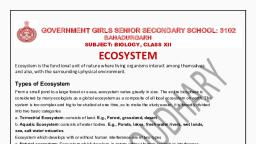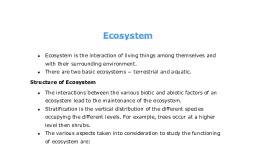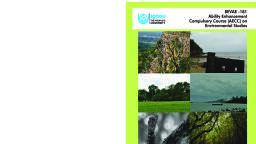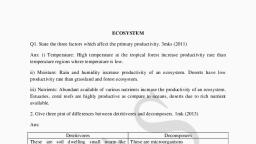Page 1 :
mmunitv, , Characteristics, Classification, , and, , Succession, , 153, , (1899, 1900). Clements (1907, 1916) thereafter, put forth various principles that governed the, process of succession, and while, , studying plant, communities, defined succession as 'the natural, process by which the same locality becomes, , successively colonised by different groups or, 2ommunities of plants., Odum (1971) preferred to designate this, rderly process as ecosystem development rather, han the more often one, ecological succession., He made an elaborate statement to define this, rocess,, , and, , in, , his, , own, , words, , ecosystem, , development' or what is more often known as, , ecological succession, may be defined in terms of, the, , following, It, , is, , three, , an, , parameters:, orderly process of community, , development that involves changes in species, structure and, , ECOLOGICAL SUCCESSION, , it is, , community processes, , reasomnably, , with time,, directional and therefore,, , predictable., Although a typical community maintains itself, more or less in, equilibrium with the prevailing, conditions of the environment, in nature this is, , hardly true. Communities are never stable, but, dynamic, changing more or less regularly over, time and space., in, or, , They are never found permanently, complete balance with their component species, with the, , physical, , environment. Environment is, , always changing over a period of time due to, variations in climatic and physiographic factors,, and, , (i) the activities of the species of, , It results from modification of the, physical, environment by the community, that is,, , succession is community controlled even, though the physical environment determines, the patterm, the rate of change, and often sets, limits as to how far development can go., It culminates in a stabilised, ecosystem in, which maximum biomass (or high information, content) and symbiotic function between, organisms are maintained per unit of, available energy flow., , the, , Communities themselves. These influences bring, , CAUSES AND TRENDS, , changes in the dominants of the, sng community, which is thus sooner or alter, placed by another community at the same place., , ut, , marked, , OF SUCCESSION, , S process continues and successive communities, , develop one after another over the same area,, , until, terminal final community again becomes, more or less stable for a period of time., This, urTence of relatively definite sequence of, , ommunities over, , Since succession is a process, more, appropriately, a series of, complex processes, it is natural that, there may not be a single cause for this., Generally,, there are three types of causes:, , a period of time in the same, , area, , known as, succession. Hult, (1885),5 while studyingecological, communities of Southern, , weden,, said to have, the, term issuccession, , used for the first time, , for the, , orderly changes, , in, , Initial or initiating causes, , These, , are, , climatic, , includes factors,, , as, , well, , such, , as, , wind, fire etc., caused by, , munities. lowever, the authentic studies on, , activity,, , ession were started in America by Cowles, , activities, , and the latter, , of, , biotic. The former, erosion and deposits,, as, , lightning, , includes, , organisms. These, , causes, , or, , volcanic, , the various, , produce, , tne
Page 2 :
Community Characteristics, Classification and Success, , 154, bare, an, , Characteristics, Classification and, , Communi, , areas, , or, , in, destroy the existing populations, , substrata with already existing living, matte, action of any external force, as a, sudden e, in climatic factors, biotic, ire, causes the existing community to, disappe: Ac, area becomes devoid of, living mater, but it, substratunm, instead of primitive, is, , intervention., , Ecesis or continuing causes, , These are the processes as migration, ecesis,, etc. which c a u s e, aggregation, competition, reaction, successive waves of populations as a result of, , successions, , are, , the, changes, chiefly in the edaphic features of, area., , Stabilising causes, These cause the stabilisation of the community., According to Clements, climate of the area is the, chief cause of stabilisation, other factors are of, secondary value., An ecological succession proceeds along the, following four trends, A continuous change in the kinds of plants, and animals., , A tending increase in the diversity of species., .An increase in the organic matter and, biomass supported by the available energy, flow (but in heterotrophic succession reverse, , true)., Decrease in net community production or, annual yield., , BASIC TYPES OF SUCCESSION, , built n . Such, , comparatively, , more, , and, , autogenic succession,, , Allogenic succession, In some cases, however, the, replacement of te, existing community is caused largely by an, other external condition and not by the, existin:, organisms. Such a course is referred to, allogenic succession., On the basis of successive changes, in, nutritional and energy contents, successions ae, sometimes classified as, , environments (terrestrial, fresh, water, marine), one type of succession is primary, succession which starts from the, primitive, , substratum, where there was no previously any, sort of living matter. The first, group of organisms, establishing there are known as the pioneers,, primary community or primary colonisers., Another, , general, , succession, , type of succession is, which starts from, , previously, , built up, , propagules, , of the, , process, known, , brought, , water, etc., , GENERAL PROCESS OF, SUCCESSION, process of primary auto trophic, The, Succession is actually completed through a number, whole, , of sequential steps,, , These steps, , which, , in sequence, , follow, , are, , as, , one another., , follows, , After, , about by air,, , reaching, , to, , new, , area, the, process of, successful establishment of the, species, as a result, of adjustment with, the conditions, prevailing there,, is known as, , ecesis. In plants, afier, migration, seeds, propagules germinate, seedlings grow, and, adults start to, reproduce. Only a few of them are, capable of doing this under primitive harsh, conditions, and thus most of them disappear. Thus, as a result of, ecesis, the individuals of species, become, or, , established, , Nudation, , in the, , area., , Aggregation, This is the development of a bare area without, any form of life. The area may develop due to, , several causes such as landslide, erosion,, deposition, or other catastrophic agency. The cause, of nudation may be:, , It is characterised by early and continus, dominance of autotrophic organisms like gre, plants. It begins in a predominantly inorg, environment and the energy flow is, indefinitely. There is gradual increase in, , Due to soil erosion, by gravity, water or wind, the, existing community may disappear. Other causes, may be deposition of sand etc., landslide, volcanic, , Glaciers, dry period,, ec,, may also, , Heterotrophic succession, , It, , is, , characterised, , by, , early dominancc, ", , cline, , environment, and there is, , a, , progresSIve, , dc, , the energy content., In, , ecological, , literature,, , entionas, , there, , are i, , succession,, many other kinds of, mainly upon the nature of the, , SDll, , so, , primarily based, the process has, , bog, etc.;, , depe, , upon moisture relauo may, and thus, , begun,, , mesarch-where, , adequate, , Conditions are present; and a xerost, , destroy, , hails and storm, frost, fire, the community., , Biotic, , an is most important,, for destruction, oT forests, grasslands responsible, for industry,, etc. Other, agriculture,, , ng, fungi,, , aue to, , population., , factors, , viruses, , etc., , are, , disease, , which destroy, , epidemics, whole, , onnn, , o r h y d r a r c h - - s t a r t 1 n g in i, , a, , activity and other factors., , Climatic, , organic matter content supported by energy o, , water is in plenty, as ponds, lakes, streal moisu, , secondary, , Migration lispersal), , The seeds,, spores, or other, species reach the bare area. This, as, migration, is generally, , After ecesis, as a result of, reproduction, the, individuals of the species increase in number, and, they come close to each other. This process is, known as aggregation., , Competition and Coaction, , hydrosere, , Secondary succession, , soil, , Topographic, , and animals. It begins in a predominantly o, , In any of the basic, , or, , water, , saline, , Autotrophic succession, , heterotrophs, such as bacteria, actinomycetes, u, Primary succession, , in, , sand, and halosere, , on, , -, , psammosere, , onrocks,, , initiating, , Ecesis (Establishment), , environment, modifies i, hus, causing its o, replacement by new communities. This course a, succession is known as, environment, , lithosere -, , rapid., , maintant, , The various types of succession have been, grouped, in different ways on the basis of different, aspects., Some basic types of succession are, however, as, follows:, , as dry deserts, rocks etc. Sometimes, there, are further d i s t i n g u i s h e d ,, , Autogenic succession, After the succession has begun, in, most of the, cases, it is the community itself, which, as a, resu, of its reactions with the, own, , 155, , where moisture 1s present in minimal amounts., , udden chang, , area., , Succession, , Neran, , Invasion, This is t, a, successful establishment of a, bare, species in, site fr area. The species actually reaches this, new, Comni, other area. This whole, pleted ny, process 1s, in, , following, , three, , successive stages, , After aggregation of a large number of individuals, , of the species, , at the limited place, there, develops, competition (inter-as well as intraspecific) mainly, , for space and nutrition. Individuals of a, species, affect each other's life in various ways and this, is called coaction. The species, if unable to, compete with other species, if present, would be, discarded. To withstand competition, reproductive, capacity. wide ecological amplitude etc. are of, much help to the species., , Reaction, This is the most important stage in succession. The, mechanism of the modification of the environment, through the influence of living organisms on it, is, known as reaction. As a result of reactions, changes, take place in soil, water, light, temperature etc. of the environment. Due to all these, the environment is modified, becoming, for the existing community which sooner or, later 1s, replaced by another community (seral community)., , conditions, , unsuitable
Page 3 :
Communiy, , Community Characteristics, Classification, on and, and sSuccession, 156, of, The whole sequence, another in the given, , communities, area, , is, , that, , called a, , one, , the sere, as seral, various communities constituting, or developmental stages., seral, stages, communities,, have low-nutrient, to, The pioneers are likely, and able to take, more, dynamic, requirements,, forms., minerals in comparatively more complex, from, small-sized and make less demand, , They, , environment., , Stabilisation (Climax), there occurs a, , Some, talked of, continuous, , when, , stage in the process,, , community becomes more or, a, longer period of time and it, itself in equilibrium with the climate, , the final terminal, less stabilised for, , and is known as climax community and the stage, , as climax stage., different, , plant, , process, , of, , communities, , succession, appearing, , and, , in, , as, , the, , soil, , croclimate,, , characteristi, , in, , area., , 1. Phytoplankton stage, , a, , They constitute the, pioneer community. Some, blue-green algae, green algae, diatoms, and bacteria, etc. are, , different, , Thus the, , kinds of, , vear., , communities in different, , first, , Dudgeon (1921), , of the, seasonal, to, Misra, , 2. Rooted, submerged stage, As a result of death, and, , phytoplanktons,, , seasons, , called them, , as, , However,, according, (1946,1955), such changes are simply recurrent, and not developmental and thus should not be, succession., , designated as succession., , The above-mentioned general process of, succession would become more clear by studying, in detail the following different kinds of seres in, different habitat conditions., , brought, , decomposition of, mixing with the silt,, surrounding land by rain waters, , and their, , from the, action of pond water, there, develops, a soft mud at, the bottom of, pond. This new, habitat which tends to be a bit, shallower and, where light, penetration may now occur easily, becomes now suitable for the, growth of rooted, submerged hydrophytes like Myriophyllum, Elodea,, and, , by, , wave, , Hydrilla, Potamogeton, Vallisneria, Uricularia, etc. These, , plants bring about further build up of, the substratum as a result of their death and, decay., The water level also decreases, making the pond, more shallower. This new habitat now, replaces, these plants giving way to another, type of plants, which are of floating leave type., , age, , HYDROSERE OR HYDRARCH, , eed swamp stage, , Ihe, , various stages in a, hydrosere are well studied, ponds, pools or lakes and we shall, study for, Ue, present purpose this, process of succession, in, , stao, , OCcurring, , pioneer, , pond,, , community, , ENVIRONMENTAL, , the, , organisms to colonise the, medium of the pond. The soils, are very, much reduced with a, value of not more than, pH, 5.00. They multiply and, grow for some time., primitive, , mon, , woodland stage, , ton, , in, , the proces, , are, , the, , oaung sa9e, rooted, 1oplank?o, submerged, , plant species of, hydrosere as show, Figure 8.13. are as follows, , under climatic, climax communities, condition, be different from the presumed, likely to, conmnunity. Ihis type of success, climax, climatic, succession. In India, with a, ia called deflected, in some habitats like, climate,, of, type, etC., 1t 1s common to, temporary ponds, poois, the development of different, observe each year, of the, , forest stage, , sedge- meaaow, , of, , presumed, , that, , than, , ction, , direction, , process. Due to, destructive effects of organisms, sometimes the, development of disturbed communities does not, occur and the process of succession instead, of, progressive becomes retrogressive. As for example, forest may change to shrubby or grassland, , can maintain, of the area. This final community is not replaced,, , Generalised, , whole process, stage, , on, , 157, , retrogressive, , istics or, as s o s i o n becomes deflected, , the, , înfluence, , called, , netimes due to changes in local conditions, Somet, , ecologists (see Gleason, 1929), haye, retrogressive succession in which, biotic, influences have SOme, , degenerating, , is, , This, , ccession, , outlined, invol, several stages, each, having charactevolves, organisms together with their environment, such developmental stage 1s called a seral sEach, These stages are infect continuous with, each otha, and the whole sequence from, till th, beginning, climax stage is known as a sere. The, specin, which colonise the bare area in the, beginning of, succession are called pioneers., above will show that, , are, , Finally,, , community., , processwith developing environmental, are shown in Figure 8.12, taking hydroser"Pley, as a, model. General process ot Succession as, , replaces, sere, and, , fication and succession, , Characeristics,, Characte, , seral communities, , COMPLEX, , in, starts, , community,, is, , in, , changes, t, of, , finally terminates, , in, , a, , climax, , are, as, , plant, , Nelumbo, Nymphaea, Limnanthemum, Aponogeton,, , a, , more obv, bvious, , designate the, based, plants cession,, the, in that community,, on, upon, , plants, , different stages, dominant forms of, , rooted, as phytoplankton, submerged stage, etc.,, variouSEages, and so on., together with, their, , all are rooted hydrophytes with their large leaves, , floating on the water surface. These are species of, , pioneer, into, , a, , some, , animals' life. But as the, in plant than animals,, it is a suc, Succession of plants only. But, to, sobvious,, due thatthe fact, that, arc, changes in, oks, , so, , and, , of, , community together withforest,, eir, of, components, vegetation., ike, Just, other primary, autotrophic successionsS,, anydrosere, too, successive, changes take place, plants as well, as, , which, , in, , Fig. 8.12. Diagram to show, munities, general process of succession with different, plant Co, appeanng therein under the influence of, developing environmental complex, taking hyaro, as an, example. Note the pioneer, seral and climax, communities., , pond. Hydrosere, orignating, , with the colonisation, pnytoplanktons which form, the, , chief, , climax communityY, , a, , 3. Rooted floating stage, By now the water depth is almost 2-5 feet. These, plants colonise the habitat with their rhizomes. They, , stage,, , These, , chief componen, , ents, , Trapa, Monochoria etc. Some free-floating species, Azolla, Lemna, Wolffia, Pistia, Spirodella,, Salvinia etc. also become associated with the rooted, plants, due to availability of salts and other minerals, in abundance. The water level by now becomes very, much decreased, making the pond more shallower., The decomposing organic matter formed due to, death of these plants brings about further build up, of the substratum. Thus floating species sooner or, as, , later disappear from the area., 4. Reed-swamp stage, This stage is also known as amphibious stage as the, , plants, , ot, , community, , are rooted but most parts, , of
Page 4 :
ucession, , CommuniyY, , aracieIUd,ldsS, SSIIcation and, and Suc, Succession, , C h a r, , 159, , Seral communities, Pioneer, , Succession, , community, , Climax, 2, , 4, , Rooted submerged Floating, stage, , of, Phytoplankton, , Trend, , community, , Reed-swamp Sedge-meadow Woodland, , stage, , stage, , stage, , stage, , -, , Blue-green algae,, , Myriophyllum, , Elodea, , Green a l g a ,, , Hydrila, Potamogeton, , Diatoms,, , Bacteria etc., , Vallisneria, , Utnicularia, , Nelumbo, , Scirpus, Nymphaea, Typha, Limnanthemum Sagittaria, Aponogeton, Phragmites, Trapa, , Carex, , Juncus, , Cyperus, , Eleocharis, , Monochoria, , Azolla, Lemna, , stage, Salix, , Cornus, , Populus, Alnus, , 7, , Forest, stage, Ulmus, Acer, , Quercus, Tropical, rain, , Spirodella, Wolffia, , Tropical, , Pistia, Salvinia, , deciduous, , ary soilS, , General trend, , of succession-, , Fig. 8.14. Scheme of succession in a pond., 6, Woodland stage, the time of, , By, , disappearance, , of, , marshy, , vegetation, soil becomes drier for most time of, the year. This area is now invaded, by terrestrial, ts, which are some shrubs (Salix, Cornus) and, trees (Populus,, Alnus). By this time there is much, accumulation of humus with rich flora of, , microorganisms. Thus, mineralisation of the, favours the arrival of new tree, species in the, area., , SO1l, gradual silting in, aod, , 7. Forest stage, i s is the, , Fig. 8.13. Diagram showing different, plant communities appearing at different stages of a hydrosere, Note the gradual deCrease in water, originang, level and successive development of the soil in area to, give finally a, or, torest climax community. (1) phytoplankton stage (pioneer community); (2) rooted submerged stage; (8)teiie, roo, Stage; (4) reed swamp stage; (5) sedge-meadow, stage: (6) woodland stage; (7) forest stage (climax comu, their shoots, , (assimilatory organs) remain exposed, air. Species of Scirpus,, Typha, Sagittaria and, Phragmites etc. are the chief plants of this stage., to, , They have well-developed rhizomes and form a, very, dense vegetation. The water level is, by now very, much reduced and finally becomes unsuitable for, , the, , growth, , of these, , amphibious species., , in, , the, , substratum,, , species, , hi, , hablu, , Cyperaceae and Gramineae, such as Care,, , Juncs, , perus and Eleocharis colonise the area. 1hey, he pond, a mat-like vegetation towards the centre ol, with the help of their nuch branched rhizom, systems. As a result of high, , rate of transpralu, sooner, , there is much rapid loss of water,, later the mud is exposed to air as a resu, become, , 5. Sedge-meadow stage, Due to successive decrease in water level and further, changes, , a pond, , of, , some, , nutrients like ammonia,, , sulphideshs ms, Thus, , Oxidised to nitrates and sulphates., marsny, Conditions approach the area and, , disappears gradually and gradually., , Vegetaton, , climax, , community., , The, , woodland, , Community is rapidly invaded by several trees. In, Opical climates with heavy rainfall, there develop, , opical rain forests, whereas in, regions,, eTe develop mixed forests of temperate, Acer and, ercus. In regions of moderateUlmus,, there, evelop tropical deciduous forests rainfall,, or, , forests, , us, e, , monosoo, , in, , the, , hydrosere, described above,, 7 the, Commu pioneer, ty, and community, stage, stages 2 to 6 as the, nunities, of a hydrosere, (seral, pec, , stages)., , stage, max, , seral, , The vario, rious stages, and the chief, component plan, stage are also shown r, , appearing at each, Figure 8.14.
Page 5 :
Classification and, , Community Characteristics,, , 160, , Functional Changes, To sun up., succession in, , ROCK, , chers, , changes, OSses, , mosse Chens), , hchen, , ns, , (, , asses, , kchensirens, Fig. 8.15., , es, mosses, , chens, , a, , thosere 2ppearing, , zomation, , showing, , the, , on, , of, a, , different plant, rock. Note the, , pioneer community, , schens around the oulcr edge and more advanced, stages of, troes located in the centre. The varnous, zones from outside, towards the centre of rock are (1) lichens, (pioneers)., (2) ng of mosses, 3), grasses (broad zone). and (4) trees, eedings) scalitered BR- bare rock., , irogs. salamanders, diving beetles, whirligig beetles, and other insects. There also, appear some turtles, and snakes, AL the, , species, , of, , mayflies, , and, , nymphs remain at2ched, the, , to, , and, , kinds of both,, , heterotrophs, , (P/R>, , ponds,, , 1, where P-rates of, , which, , complexity, increase in organic matter, and, tendency towards metabolic stability) are, in, sense,, both causes and effects of the, er, processes of change and the eventual stability tha, , characterise ecosystems in general., , At the, , edge-meado stage. the animals like, Anndnta Pdum, etc. betme common., Finally. at the wdiand stage, under lerrestrial, conditions most of the terrestrial forms of arnimal, as, , Jife appEar in the arca, , (BC4, , stage, , Foliose, , lichen, , Dermatocarpon, , Rinodina, Lecanora, , Aristida, , Grimmia, , Poa, , Tortula, , Fig., , 8.16. The trend, , to the, , extent that it, changes in plants, looks as a succession of plants only and various, are obvious, , stages are named on the basis of particular stage, , dominated by a particular plant species., The various stages and their component plant, species of a lithosere appearing on a rock are, also shown in Figure 8.16. These are as follows:, , nis, , 1s, , a, , typc of, , 1S, , xerosere, , (Fig. 8.15)., , The, , originating on Ba, original substrau, , deficient in water and lacks any organic, , n, , having only minerals in disintegrated unwean, state., , The, , substratum, through a, , pioncers, are, , to, , crustose, , colonise, , type of, , this pri, arnd, , hcnet, , Ur, series of successive seral stagh, , Succession finally erminates into forest rce, , 815)., constitutes the climax community (1g. o, pointed out in hydrosere, in a lithoscre, plants, successive changes take place in bo, st, well as animals. But here also, as in, n, , the, , primary autotrophic successions, change, , 1e are more obvious than those in ania, , T, , Festuca, , stage, , PhytocarpUS, , Mesophytic, , trees, , of, , succession, , growth, of, , on, , of, , a, , rock., , some, , such, , Polytrichum,, , xerophytic, , moSses as, , species, , Tortula and Grimmia. At their, successful growth, they compete with the, lichens., Due to their death and, decay there is further, addition of organic matter in the soil., he, thickness of the soil layer now increases., 4. Herbs stage, , 1. Crustose lichens stage, As mentioned earlier, the substratum colonised, by, these pioneers is very poor in moisture and, organic, matter, subjected with extremes of, temperature., The lichens of this, stage are species of, Rhizocarpon, Rinodina and Lecanora. They, produce some acids which bring about, weathering, of rocks. The dead organic matter of lichens, then, , replaced by foliose type of ichens., Foliose lichens, stage, ney appear on the substratum, partially built, y he crustose lichens. This, 2., , rock surfaces, , Forest, , stage, Rhus, , General trend of succession, , are, , A XEROSERE ON ROCK, , Shrub, , Polytrichum, , wever, this process is very slow. These lichens, , LITHOSERE:, , 5, , Herb, , Stage, , Parmella, , Rhizocarpon, , Moss stage, , stage, , becomes mixed with the small particles of rocks., , gi, , anals, , Crustose lichen, , aulot, , productio, which are, , Climax, , community, , 3, , changes., , R-rates of respiralion), to those, stabilised (P/R=1). and finally to, hetcrotrophic, (P/R<1) condition. Increasing heterotrophy, of, aquatic system applies to that phasce of these, their, succession in which they achieve a, terrestrial, condition. These four, major structural and, functional attributes of ecological, (increase in species diversity, increase insuccession, structurzl, , dragon flies, whose, submerged parts of, , stage The bottom of the, pond is now, inhabited by somc annelids. mud, and bull, pickrel, heads. Red winged black birds, king fisher. great, blue beron., swarmp sparrw. ducks, musk rats,, beavers etc. become comrnon in, the areá., , communities, , community, , dlurng, , i.e., functional, major functional changes include (1) a, progressive, increase in amount of both,, living (biomass), dead organic malter, and (11) a, ). and, shift in, comnun, metabolism from young, munity, , different, , vegetation. and adults present on the surfaces, emergent parts. Gill breathing snails are, replaced by lung breathers as Lymnea, Physa, and, yraulus. Among insects. water scorpion, giant, water bg., cavenger beeties ec. are present at, thss, , Iydrosere, , standpoint i o r, (1) a, composilion,, change in, composition, and (11) a change in Var, diversity. Besides them there take place Icty, m, changes in number and, , reed-swamnp stage, the pond becomes, shallow er. and the bottom starts to be, expOsed., The floating animals are, , replaced by, , may, pond, , Seral, , Ploneer, , are, , autotrophic, , Diagrarmmatic representation, , communtes of, , vegetational, , mosses, , BR), , a, , 161, , Hydroe, , Conclude that, hat, a, (hydroserc), the, structural, , in, , asses, , trees, , from, , WC, , in, , i t y Characteristics, Classification and Succession, , Successio, , up, , community includes, species of Parmelia,, Dermatocarpon etc. wnie, ave large leaf-like thalli., They can absorb and, more water and are able, to, dust, , Ces, , which help, , accumulate, , Due, , to more extensive, growth of mosses there, accumulates more soil and there are added more, minerals to it due to leaching out from the, , overlying vegetation. This changed habitat favours, the growth of some herbaceous weeds which are, chiefly the annuals, in turn being followed by, , biennials and perennials. Due to their, growth, and death there is much more accumulation of, , some, , humus in soil together with further weathering of, rock. Thus, habitat changes with decreasing xeric, conditions. This stage is constituted by such, shallow rooted grasses as Aristida, Festuca, Poa,, Solidago, etc., which in turn are replaced by, shrubs., 5. Shrub stage, , Due to much accumulation of soil, the habitat, becomes suitable for shrubs which start migrating, in the area. These are species of, Rhus, , in the further build, up ot the, Thus, some, humus, becomes, m ated. The, of rocks and its, mixing with humus weathering, a fine thin soil results into the development, ere is a, layer on rock, and thus, change in the habitat surface,, , community., , Surfvelopment, , Some xerophytic, , substratum., , 3. Moss stage, , pecially, , Phytocarpus etc. They overshadow the herbaceous, , vegetation. The soil is further enriched by this, dense shrubby growth. These in turn are finally, replaced by trees, , which, , make, , up the climax, , 6. Forest stage, , of thin soil, layer on, in the crevices. favours, , u, , tree, , species, , invade the area., , Further weathering of rocks and increasing humus, , (BC 4)

